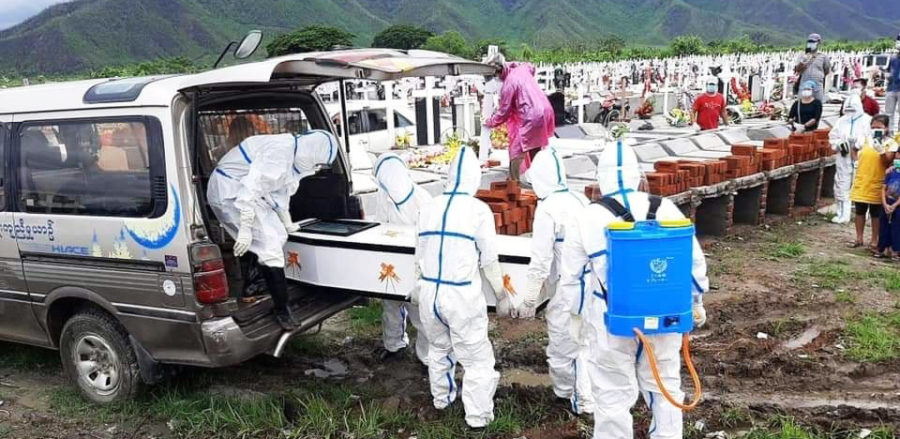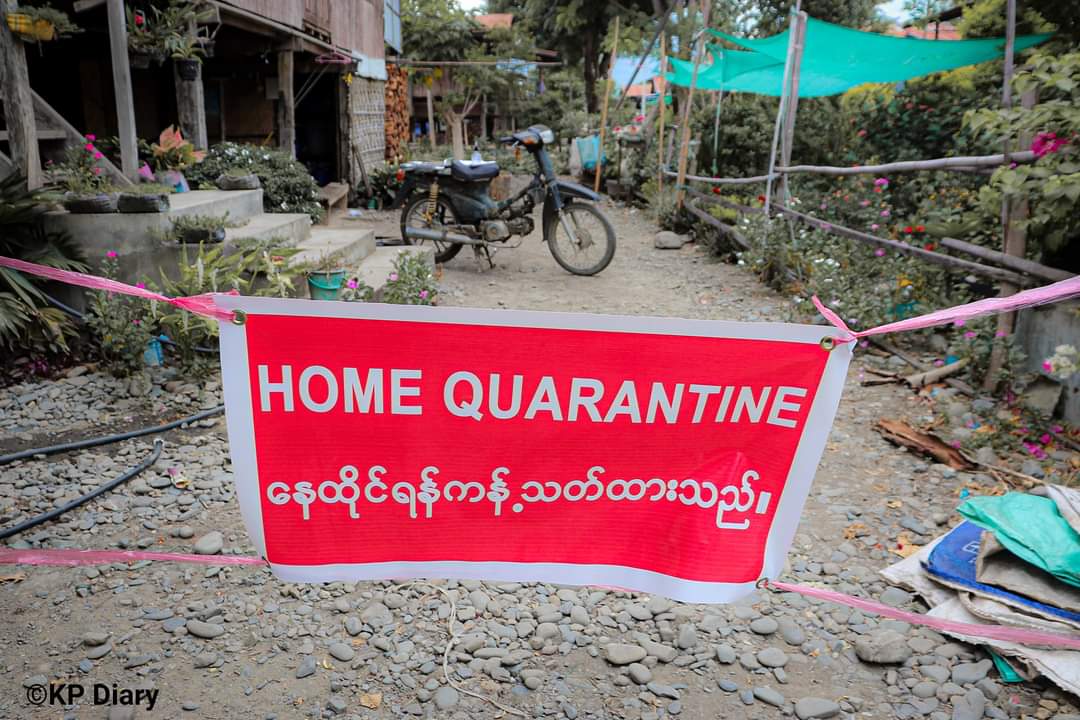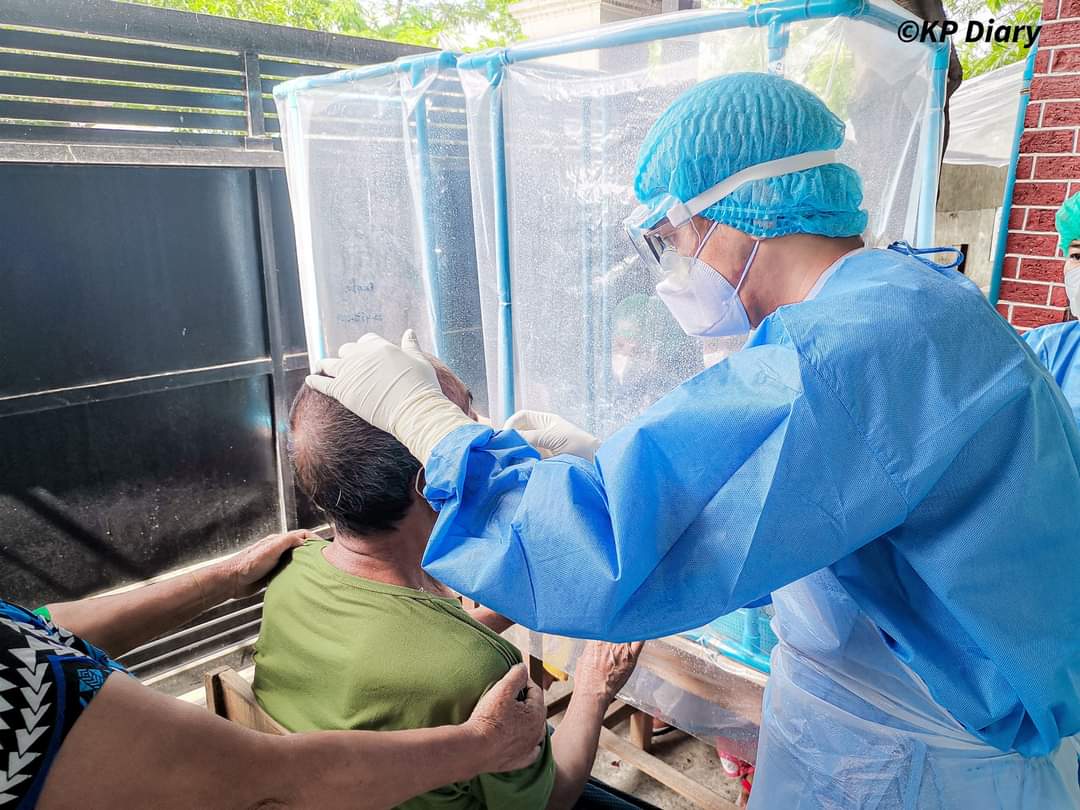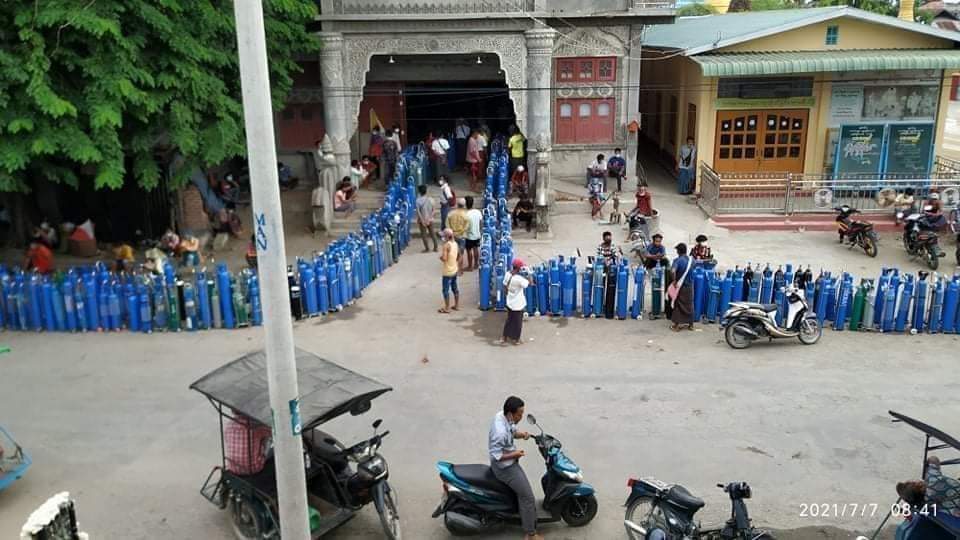COVID-19 deaths mount with alarming speed in Myanmar’s Kale Township in Sagaing Region where social workers and philanthropic groups leading the response say at least 207 people are believed to have died from coronavirus from July 1 to 6.
But the junta-controlled Ministry of Health and Sports reported only six deaths [from July 1 to 6] while the estimated death toll in first six days of July is 176.
Philanthropic groups said around 400 have died in the township in the last month. But the ministry has published only 11 deaths for the last two weeks of June.
The death toll includes coronavirus-positive patients receiving treatment at centers, those diagnosed with COVID-19 who have stayed at home as the centers are overstretched and those with symptoms who died before being diagnosed.

Ko Ye Thiha Aung, chairman of the Karyakanmyitta charity, said the ministry only recorded the deaths at COVID-19 centers, while the majority of people were dying at home.
Social workers and philanthropic groups in Kale said the regime’s numbers do not reflect the actual situation while some suspect the regime is intentionally attempting to cover it up.
A volunteer with Central Chin Pawlpi (CCP) said their organization has helped arrange 42 COVID-19 funerals since late May.

A social worker with another group said: “It is not a surprise as we already know they only tell lies. Here the situation is far worse. Even the funeral services cannot cope some days.”
Kale is one of five areas in Myanmar where the more transmissible and severe coronavirus variants, Alpha, Delta and Kappa, were first detected. The virus variants are the same as those found in India, the USA, France, Germany, Spain, Ireland and Switzerland.
Kale has a public hospital, a traditional medicine hospital and a center set up by philanthropic organizations with all reporting staff shortages and excessive demand, Ko Ye Thiha Aung said.
He said under the civilian government the township could cope with earlier outbreaks better because there were sufficient medical staff, volunteers, donors and treatment centers.
“Before the hospital operated for 24 hours but not now,” he added.

Following the coup, thousands of striking doctors, nurses and other staff at public hospitals went into hiding to avoid being jailed on incitement charges. Several charities were raided and faced arrests for helping wounded anti-regime protesters.
In dire need of oxygen
The CCP volunteer said the medical oxygen supply issue is the greatest difficulty in the township.
Sources said Kale’s high number of COVID-19 deaths is largely due to shortages of oxygen.
“We are in dire need of medical oxygen as the infection cases are sharply increasing,” the volunteer said. The township at times can only meet 40 percent of demand, leading to long queues for oxygen cylinders.

Cylinders often failed to arrive because trucks broke down or were stranded by monsoon rains.
An oxygen production plant, funded by donors under the civilian government, recently opened in Kale but it could not operate properly because of the unstable power supply.
The overnight curfew enforced by junta troops who shoot on sight has also prevented patients from reaching the hospital or obtaining oxygen, the volunteer said.
You may also like these stories:
Myanmar Hospitals Run Out of Beds Amid COVID-19 Surge
Two Civilian Fighters Killed in Shootout With Myanmar Junta Troops in Dawei
Norway’s Telenor Sells its Myanmar Telecoms Operation to Regime-Linked Partner

















